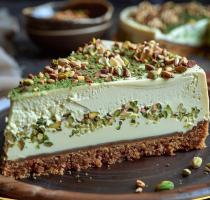Copy Link
Add to Bookmark
Report
Cider Digest #1140

Subject: Cider Digest #1140, 5 June 2004
From: cider-request@talisman.com
Cider Digest #1140 5 June 2004
Forum for Discussion of Cider Issues
Dick Dunn, Digest Janitor
Contents:
Re: Culturing Wild Yeasts (Grant Family)
Natural Yeast (jeff shields)
Burrowhill Early in US? (Dick Dunn)
Re: Stoke Red and Bourbon barrels (tblists)
Apple flavour in cider CD #1137 2004 05 26 (stephen.schultz@att.net)
Send ONLY articles for the digest to cider@talisman.com.
Use cider-request@talisman.com for subscribe/unsubscribe/admin requests.
When subscribing, please include your name and a good address in the
message body unless you're sure your mailer generates them.
Archives of the Digest are available at www.talisman.com/cider
----------------------------------------------------------------------
Subject: Re: Culturing Wild Yeasts
From: Grant Family <grants@netspace.net.au>
Date: Tue, 01 Jun 2004 16:05:27 +1000
Michael Arighi wrote:
>This leads me to some wonderings. If the wild yeast from a particularly
>successful batch were saved, then used as the innoculant for the next
>batch, wouldn't this be even better than dependence on happenstance?
Now I'm more experienced with beer-yeast than cider yeast myself, but
I can see two main problems with this (otherwise very interesting) idea:
i) Wild "yeast" is usually a huge range of microflora that has reached
some kind of equilibrium (as opposed to "happenstance") within the
apple before it is utilised by cider-makers. As such, this balance can
probably only be achieved once. That is, if you pitched a second batch
of juice onto a yeast cake from another batch's secondary fermentation,
you would not be likely to get the same results.
e.g. Wyeast (a beer-yeast company) releases some "blends", which are
a combination of a couple of different yeasts, presumably also in some
kind of equilibrium (probably equal proportions). I bought an 11-month-
old mixed culture (for half-price mind you!) and used it in two successive
beers. The results were mixed. The first batch seemed in character to
have been taken over by only one of the yeasts; the second batch
seemed to have been dominated by the second. More importantly, these
were German Wheat beers, which derive most of their distinctive flavours
from the yeast. As such, the first beer was authentic, the other was
mediocre!
ii) Secondly because you're dealing with a *range* of yeasts and other
bugs, culturing as you described would be impossible. Agar techniques
are for isolating single yeast cultures and this would defeat the purpose
of your idea.
I suppose the commercially available strains must have been isolated
this way in the distant past, but if the consensus of this group is that
wild yeasts provide a better flavour profile, would it be worth it?
Then again, maybe I'm blathering!
Cheers
Stuart Grant,
Hobart, Tasmania, Australia.
------------------------------
Subject: Natural Yeast
From: jeff shields <jshields99827@yahoo.com>
Date: Wed, 2 Jun 2004 08:54:53 -0700 (PDT)
Hi,
I have been reading this suberb list for some time
without any contribution on my part. I now have a
very small piece of info to add regarding yeast. Ask
any good baker and you will learn that natural yeast
is also far superior in bread over its commercial
counterpart. Commercial yeast for bread is a
relatively new product coming into being sometime in
the 1800's (I forget the exact date). Natural yeasts
(sourdoughs basically) result in a bread with better
flavor that will last much longer without spoiling.
For what it is worth, rye flour is the best medium
for natural, or wild, yeast.
Thanks for such a great resource as this list,
Jeff in NW Washington state, growing apples, making
cider and baking bread.
------------------------------
Subject: Burrowhill Early in US?
From: rcd@talisman.com (Dick Dunn)
Date: Thu, 3 Jun 2004 01:36:34 -0600 (MDT)
Does anyone in the US know of a source for "Burrowhill Early" scions, etc.?
It's not on the Botner's list I've seen, and Geneva doesn't appear to have
it. It seems like it could be a useful variety for us here...I'm of a mind
that any bittersweet with a potential adaptation to short season is of
interest.
adthanksvance
- ---
Dick Dunn rcd@talisman.com Hygiene, Colorado USA
------------------------------
Subject: Re: Stoke Red and Bourbon barrels
From: tblists <tblists@pshift.com>
Date: Thu, 03 Feb 2005 21:04:24 -0500
Jason:
Some replies follow. I'm cc:ing them to the digest as they may be of
general interest
>I am curious- when did this apple ripen for you? All of the English
>sources say that this apple ripens late November. Now you may be able to
>get away with this in the Lake Champlain Banana belt, but down here in the
>hills, that just won't work. Seriously, do you have a record of when the
>Stoke Reds were picked and what type of brix you got off of them?
I bought the Stokes from Steve Woods at Poverty Lane Orchard in Lebanon, NH
sometime in late October. Steve, who has more experience growing these
cider apples in New England, much less North America, than probably anyone,
has said that these cider fruit tend to have a more compact season than
they do back home in England. That is, they tend to bloom later and ripen
earlier. While we have colder winters and later springs, we also
accumulate a lot more heat units during the summer than the Brits tend to.
Ian Merwin at Cornell has had the same experience. In planting my orchard,
I paid little attention to ripening time, actually hoping I could ripen
later after my regular work harvest is over.
>...but how did your cider from the bourbon barrel taste? You mentioned
>that you cleaned it pretty thoroughly, was there still a strong bourbon
>taste imparted to the cider?
Actually I think it was a Canadian Whisky barrel. Old writing on one of
the heads reads somewhere in Kentucky, but a lot (most?) of Canadian whisky
makers reuse bourbon barrels. This second leaching of the oak with 160
proof liquor tends to pull out a lot of the flavor contribution. The first
batch I did in it was only aged in the barrel, not fermented. Having
poured the last 1.5 gallons of whisky out of the barrel myself I figured
the alcoholic strength of the previous occupant was strong enough to keep
any bugs at bay, so I didn't sulfite but did rinse it a couple of
times. After three months in there, what was a fairly bland cider did pick
up a bit with the vanilla/oak tones that were quite noticeable, but then
again I like bourbon. This last batch has no discernable bourbon/whisky
taste, but the barrel was well-washed, stored full, well-rinsed, and then
sulfited. It may very well age out of its rough state to where I can taste
some of the barrel, we'll have to see.
All for now,
Terry B
================
Terence Bradshaw
1189 Wheeler Road
Calais, VT 05648
tblists@pshift.com
(802)229-2004
1450 feet, zone 4A/B?
The views represented are mine and mine only........
------------------------------
Subject: Apple flavour in cider CD #1137 2004 05 26
From: stephen.schultz@att.net
Date: Fri, 04 Jun 2004 19:12:42 +0000
The total discussion of "Apple Flavour in Cider" has listed a number
of plausible varibles influencing the outcome. Bob Kyme the former New
York State Geneva Station fermented fruit juice expert felt that flavour
esters were more readily maintained in solution with higher levels of
alcohol.Through some small experiments that he did, he felt that a 9-10 %
alcohol range was better than a 5-6 % alcohol range in retaining the flavor
and preventing off-gasing of important esters .
------------------------------
End of Cider Digest #1140
*************************
























